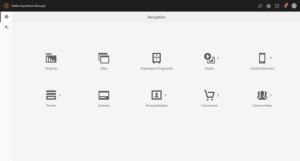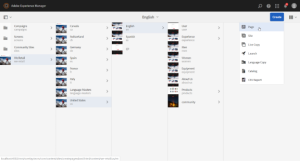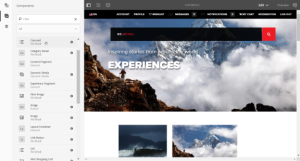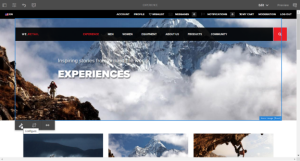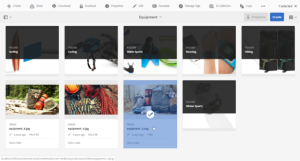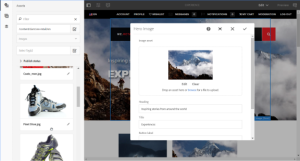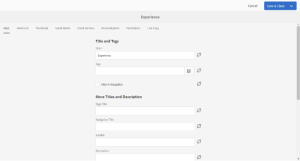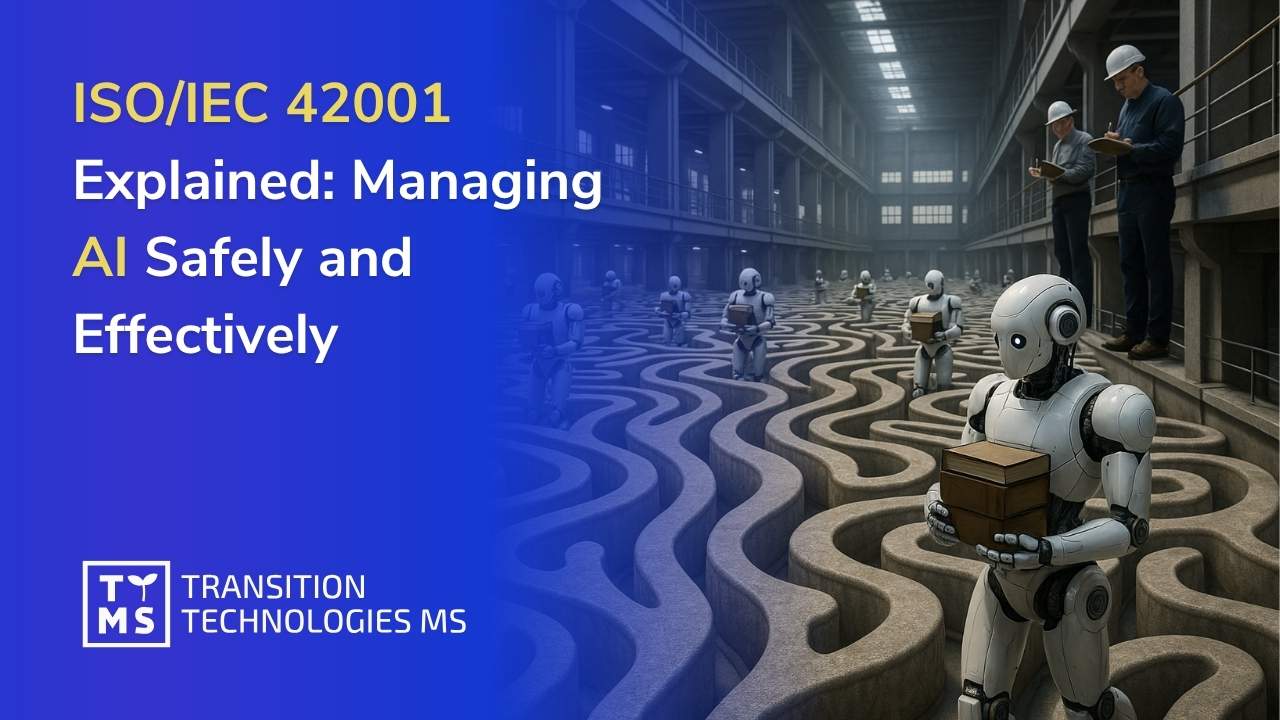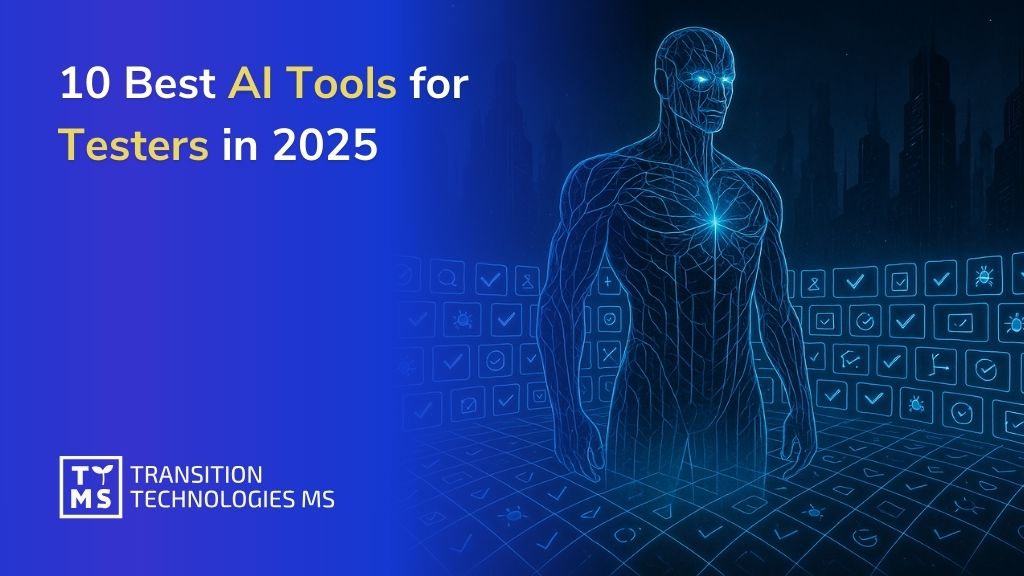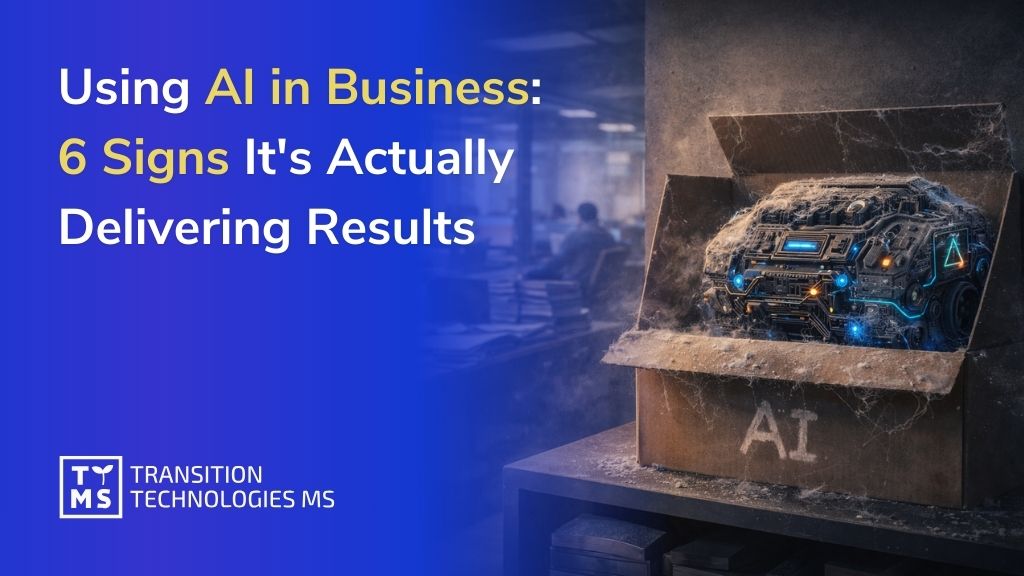Imagine a campus where every student has a personal AI tutor available 24/7, and professors can generate lesson plans, teaching materials, or assessments in seconds — this is no longer a scene from a futuristic movie, but a real transformation already underway.
This shift is happening because higher education is facing unprecedented pressure: rising student expectations, rapid changes in the job market, and the need to deliver more personalized and effective learning experiences. AI is emerging as the answer to these challenges, providing tools that allow universities not only to streamline processes but also to create more engaging, accessible, and modern learning environments.
That is why it is worth taking a closer look at this phenomenon. Understanding the role of AI in universities helps reveal where global education is heading, which technologies are becoming standard, and what strategic decisions academic institutions will need to make in the coming years. This article explores not only the facts but also the context, motivations, and potential consequences of AI-driven transformation within the academic landscape.
1. Why AI Is the Future of Higher Education
Just a few years ago, artificial intelligence was a topic for academic seminars rather than a practical tool used on campus. Today, it is becoming a foundational element of many universities’ development strategies. Why? Because AI delivers exactly what modern education needs most: scalability, personalization, and the ability to respond quickly to a rapidly changing world.
There is also growing competition among universities. This is especially visible in rankings and elite academic environments such as the U.S. Ivy League, where institutions constantly compete for the most talented students and aim to offer something that truly sets them apart. AI is now one of those differentiators — a symbol of modernity, innovation, and readiness for the workforce of the future.
At the same time, the student population itself is changing. Today’s students grew up with technology, screens, and instant interaction. For many of them, a 90-minute lecture without the ability to ask questions or receive immediate feedback is simply ineffective. This is not a matter of laziness but a fundamental cultural shift in how information is processed. Universities that want to attract top talent and maintain their academic prestige must respond to this shift.
1.1 Tailoring Education to Individual Student Needs
One of the greatest advantages of implementing AI in higher education is the ability to realistically address the individual needs of each student. A strong example comes from the California State University (CSU) system — the largest public university system in the U.S. — which in fall 2025 deployed the educational version of ChatGPT Edu, making it available to more than 460,000 students and over 63,000 faculty and staff (Reuters+2openai.com+2).
Through this solution, students gain access to personalized tutoring, customized study guides, support in understanding complex concepts, and help with academic projects. AI can adapt the pace, style, and format of learning to each student’s unique abilities — something that is often difficult to achieve in traditional group-based teaching models.
As a result, universities can offer more inclusive and flexible learning environments that accommodate diverse learning styles and levels of preparedness. With AI, personalized education is no longer a luxury — it is becoming the standard.
1.2 Support and Enablement for Faculty and Academic Staff
ChatGPT Edu at CSU is not only a powerful tool for students — it provides equally significant value to faculty members and administrative teams. They can use the solution for administrative tasks, preparing teaching materials, creating syllabi, designing tests, generating lesson plans, and producing a wide range of educational resources.
Automating routine, time-consuming, and repetitive activities allows academic staff to significantly reduce their administrative workload. In practice, this means more time for direct interaction with students, conducting research, and improving the overall quality of their courses.
Importantly, specialized tools such as AI4 E-learning deliver similar benefits. Designed specifically to automate the creation of educational content and streamline the work of teaching teams, these solutions can generate course structures, create quizzes, summaries, supplementary materials, and lesson variations — accelerating the entire e-learning development process and relieving instructors of technical tasks.
As a result, universities gain greater flexibility and substantially higher operational efficiency, while faculty members can focus on what matters most — teaching, advancing academic expertise, and strengthening the institution’s educational advantage.
1.3 Broad Integration of AI into Curricula — Building Future-Ready Skills
In China, universities began introducing new courses in 2025 based on DeepSeek models — an AI startup whose solutions are considered competitive with leading U.S. technologies.
These programs cover not only technical components such as algorithms, programming, and machine learning, but also ethics, privacy, and security. This means Chinese universities are intentionally shaping a new generation of AI specialists, emphasizing technological responsibility and awareness of the consequences of AI use.
In parallel, China is implementing a nationwide education reform aimed at integrating AI into curricula from primary school through university. The goal is to build future-ready competencies such as critical thinking, problem solving, creativity, and collaboration.
This direction ensures that students not only learn traditional subjects, but also develop skills that will be essential in a world increasingly dependent on technology.
2. How Universities Can Benefit from Artificial Intelligence: Key Areas of Application
Based on the examples above, universities can begin with several strategic areas:
Personalized learning – AI tutors or learning assistants that adapt to a student’s pace and style, adjust materials, help explain complex topics, and support learning design.
Faculty support – Generating lesson plans, tests, and teaching materials; automating administrative tasks; and enabling instructors to focus more on the quality of teaching and student interaction.
New AI / ML / Data Science courses and programs – Preparing students for the labor market and developing competencies that will be in high demand in the coming years.
Interdisciplinary education combined with AI ethics – Integrating technology learning with discussions on privacy, ethics, and safety — an area gaining importance as AI becomes ubiquitous.
Developing digital and AI-ready competencies among graduates – Strengthening the role of universities as key institutions is shaping the future workforce.
3. Challenges and Concerns: What Higher Education Institutions Must Consider When Implementing AI
While the benefits of AI are significant, the risks are equally important:
Blind trust in AI – AI tools can make mistakes, including so-called hallucinations—situations in which the system generates incorrect or fabricated information. In the context of education, this may result in delivering inaccurate content, factual errors, or misinformation. This requires strict verification by faculty or the use of AI solutions that rely on RAG (Retrieval-Augmented Generation) to ensure factual grounding.
Ethics and privacy – Especially when AI has access to student data, performance metrics, or learning activity. Universities must establish clear policies, ethical standards, regulatory frameworks, and full transparency regarding how AI tools process information.
Risk of deepening educational inequality – If access to AI—or the ability to use it effectively—is uneven across the student population, AI adoption may unintentionally widen existing educational gaps.
Changing roles of faculty and academic staff – AI requires adaptation, upskilling, and a shift in a pedagogical approach. Not every institution or instructor is ready for this transition, which can create resistance or implementation challenges.
Quality and academic integrity control – AI cannot replace expert knowledge. Tools should support teaching—not become the sole source of content. Maintaining academic rigor requires human oversight, clear review of processes, and continuous evaluation of AI-generated materials.
4. Why Now Is the Time for Universities to Implement AI
Several factors make the 2026 period an ideal moment for universities to seriously consider AI integration:
AI technologies have matured – Models such as DeepSeek show that AI can be developed in a more cost-efficient way, while companies like OpenAI provide dedicated educational versions — significantly lowering adoption barriers.
The job market demands AI competencies – Graduates without the ability to use AI tools may become less competitive. Academic institutions have a unique opportunity to become key providers of these future-proof skills.
Global competition is accelerating – As seen in the actions taken in China and the United States, universities that implement AI early can gain a strategic advantage — attracting more students, research funding, and international collaboration opportunities.
5. How Universities Can Prepare — A Step-by-Step Practical Guide
To successfully implement AI in higher education, universities can follow an approach similar to the implementation model used in solutions like AI4E-learning. Below is a set of essential stages that form a coherent, practical roadmap for digital transformation.
Audit institutional needs and context
Start with a diagnosis: which departments, faculties, and processes will benefit most from AI? While IT, engineering, and data science are natural candidates, humanities, law, pedagogy, or psychology can also gain value — for example through AI assistants supporting analysis, writing, or personalized project work.
Analyze challenges and expectations
The next step is identifying what the university wants to solve: lack of standardized teaching materials, long content creation cycles, the need for fast localization, limited tools for personalized learning, or the necessity to automate repetitive tasks. The clearer the definition of challenges, the more effective the implementation.
Choose tools and partners
At this stage, the institution decides whether to use existing solutions (e.g., ChatGPT Edu, available open-source models like DeepSeek if publicly released) or build custom tools with the help of technology partners. It is crucial to consider data security, scalability, and integration with existing systems.
Design and customize the solution
As in the AI4E-learning model, the key is aligning functionality with real academic needs. This includes defining automation levels, course structure, interaction mechanisms, content import/export workflows, and analytical capabilities. Each faculty may require a slightly different configuration.
Train academic and administrative staff
AI implementation requires preparing its end users. Faculty members must understand how to use the tools effectively, recognize limitations, and be aware of basic ethics and data protection principles. Training increases adoption and reduces concerns.
Integrate AI into curricula
AI should not be an add-on. Universities can incorporate it into courses and programs through classes on AI itself, technology ethics, data science, practical projects, or labs using generative models. This ensures students learn with AI and about AI simultaneously.
Implement and test in practice
The next step is running pilot programs: initial AI-supported classes, modules, or courses tested in real academic conditions. As with AI4E-learning, rapid feedback loops and iterative improvements are essential for success.
EstablishAI usage policies and ethics
Every university needs clear rules defining how AI may be used, how to verify AI-generated content, how to protect student data, and how to prevent misuse. A formal AI policy becomes the foundation of trust and accountability.
Provide continuous support and system development
Implementation is only the beginning. Universities need ongoing technical and academic support, system updates, and the ability to expand functionality. Like AI4E-learning, AI systems require continuous improvement and adaptation.
Evaluate outcomes and measure impact
Finally, it is essential to regularly assess whether AI truly improves educational quality, increases student engagement, supports faculty, and delivers the expected benefits — or whether it introduces new challenges that need to be addressed.
6. The Future: How AI Could Revolutionize Higher Education
If universities approach AI thoughtfully — with a clear plan, strategy, and sense of responsibility — an entirely new landscape of opportunities opens before them. In practice, scenarios that sounded futuristic just a few years ago may soon become reality:
AI as a personal mentor for every student
Imagine a world where students no longer have to wait for office hours or rely solely on lecture notes. Instead, they have access to a digital mentor available 24/7. This mentor can explain difficult concepts in multiple ways, suggest additional reading, analyze projects, help structure written assignments, and even guide academic development. This represents a completely new level of educational support.
New forms of learning that evolve and respond to the world
Instead of rigid, static programs, universities could deliver hybrid, adaptive, and dynamic courses. Course content could update almost in real time, responding to market shifts, technological advancements, or scientific discoveries. Students would learn not only specific topics but also how to learn — faster, more flexibly, and in ways that suit their individual learning styles.
Universities as major AI competency hubs
Higher education institutions could become the primary centers for developing future technology leaders. Beyond traditional disciplines, entire pathways focused on AI, data science, analytics, technology ethics, and regulatory frameworks may emerge. This is an investment not only in students but also in the institution’s prestige and its position on the global education map.
Greater efficiency and more time for what truly matters
AI can take over many repetitive administrative tasks, including reporting, organizational processes, and documentation preparation. As a result, universities gain more financial, operational, and time resources, which can be redirected toward research, innovation, and meaningful interactions between faculty and students.
7. Conclusion
Artificial intelligence has the real potential to transform higher education — not as a technological curiosity, but as a central element of the learning experience. Examples from the United States (CSU + ChatGPT Edu) and China (DeepSeek-based courses and systemic reforms) show that AI can support students, ease the workload of educators, and prepare graduates for the demands of a modern labor market.
However, for this transformation to deliver its full benefits, universities need informed decision-making, the right tools, trained faculty, and ethical frameworks for AI use. Institutions that invest in AI today can become leaders in the future of education and offer students a meaningful advantage — in knowledge, skills, and readiness for the challenges of the coming years.
If you want to explore how modern AI tools can support the creation of educational content and improve the quality of teaching at your university, visit AI4E-learning and discover our solutions:
👉 AI4E-learning – AI E-learning Authoring Tool for Organizations
If you are looking for a company that will help you implement AI into your educational processes, contact us. Our team of specialists will help you choose the right solutions for your organization’s challenges.
Are universities truly ready for the AI revolution?
Not all institutions are at the same stage, but the direction of change is clear: AI is shifting from an interesting experiment to a strategic development priority. Examples such as the rollout of ChatGPT Edu across the California State University system or DeepSeek-based courses in China show that the most innovative universities are already testing and scaling AI solutions. Many institutions, including those in Poland, are still in the exploration phase — assessing needs, running audits, and preparing initial pilots. Importantly, “readiness” does not mean full transformation from day one, but rather thoughtful, intentional adoption with clear goals and responsible planning.
What are the most important benefits of using AI in higher education?
The biggest advantage of AI is the ability to personalize learning and provide tangible support for both students and faculty. Students gain access to 24/7 AI mentors who can explain difficult concepts, suggest additional resources, and assist with projects or written work. Faculty benefit from automation of routine tasks such as preparing lesson plans, tests, and instructional materials, giving them more time for student interaction and research. Universities, in turn, gain greater operational flexibility, higher efficiency, and the ability to build a stronger competitive position in the academic market.
Will artificial intelligence replace university instructors?
No. The role of AI in higher education is to support—not replace—instructors. Tools such as ChatGPT Edu, AI4E-learning, or DeepSeek-based models can take over certain technical and administrative tasks, but they cannot replace the mentor–student relationship, critical thinking, or academic responsibility. In practice, AI becomes a “second pair of hands” for educators: helping generate materials, analyze results, and personalize content. Ultimately, it is the human instructor who ensures academic quality and shapes the learning experience. Universities that treat AI as a partner—not a threat—gain the most.
How can universities, including those in Poland, start implementing AI step by step?
The first step is a needs audit to determine which faculties, programs, and processes will benefit most from AI. Next, universities should define specific challenges: lack of standardized materials, long content development cycles, limited personalization tools, or the need to automate repetitive tasks. The following stage is selecting appropriate tools and technology partners, then designing a solution tailored to the institution’s needs—similar to the AI4E-learning implementation model. Training academic staff, launching pilot programs, and gradually scaling to additional areas are essential. Clear AI ethics policies, usage guidelines, and continuous evaluation complete the process.
What are the biggest risks of using AI in higher education, and how can they be mitigated?
Key risks include uncritical trust in AI (including model “hallucinations”), ethical and privacy concerns, and the potential widening of inequalities if access to AI tools is uneven. To mitigate these risks, universities should implement clear AI usage policies, ensure transparency for students and staff, and use verification mechanisms such as RAG-based solutions or structured content-checking processes. Faculty training is crucial so instructors can critically evaluate AI outputs and teach students to do the same. In this model, AI remains a supportive tool—not an autonomous source of knowledge—protecting the integrity and quality of the academic process.
Read more
